Online Quiz
Stability & Cloud Development
Adiabatic Lapse Rates
Adiabatic process
dry adiabatic rate DAR = 10°C/Km
If parcel of unsaturated air expands & cools, or compresses & warms, with no interchange of heat withits surroundings
The Rate of adiabatic cooling or warming remains constant “only to unsaturated air”
Wet adiabatic rate WAR ≈ 6°C/Km
As the rising air cools, its RH increases, & at the Td, RH becomes 100%
Further lifting results in condensation, a cloud forms, & latent heat is released inside the rising air parcel
The air no longer cools at the DAR but at a lesser rate. Because the heat added offsets some of the cooling due to expanding
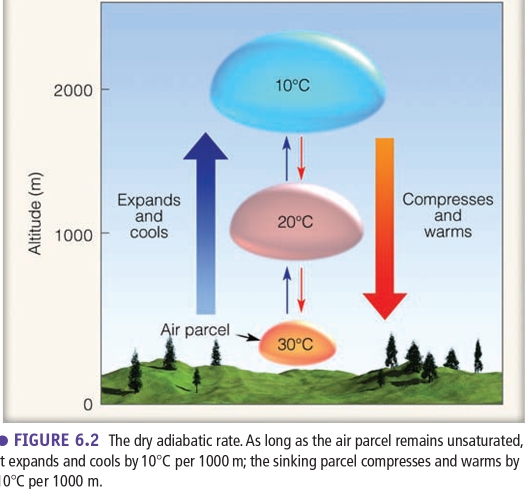
Lifted Condensation Level (LCL)
The height at which air that is cooling at the DAR becomes saturated & condensation begins
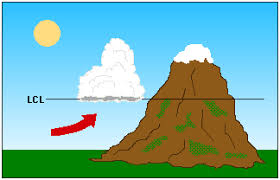
Processes that Lift Air
Orographic Lifting: forced over a mountain
Convergence forced to rise as it collides
Frontal Wedging: air is forced up due to difference in air T or ρ
Localized Convective Lifting differential heating, Air is forced to rise to heating air & lowering its density
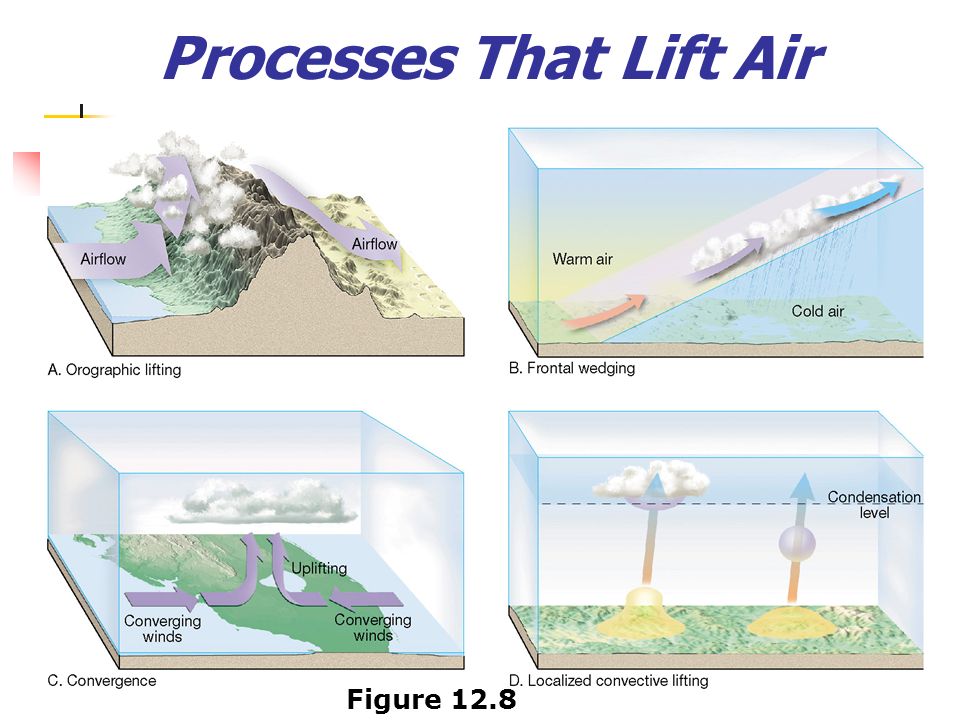
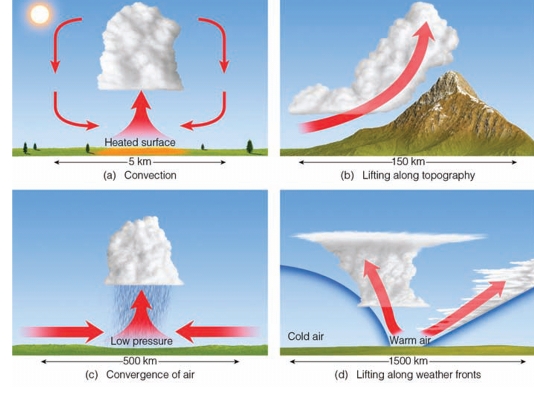
Unequal heating of surface causes pockets of air to be warmer than the surrounding air
Buoyant parcels (thermals) of hot air rise
Convergence
When air flows in from > one direction (not a front) can collides, It cannot go down
happens over islands & other regions where 2 bodies of water are located closely together
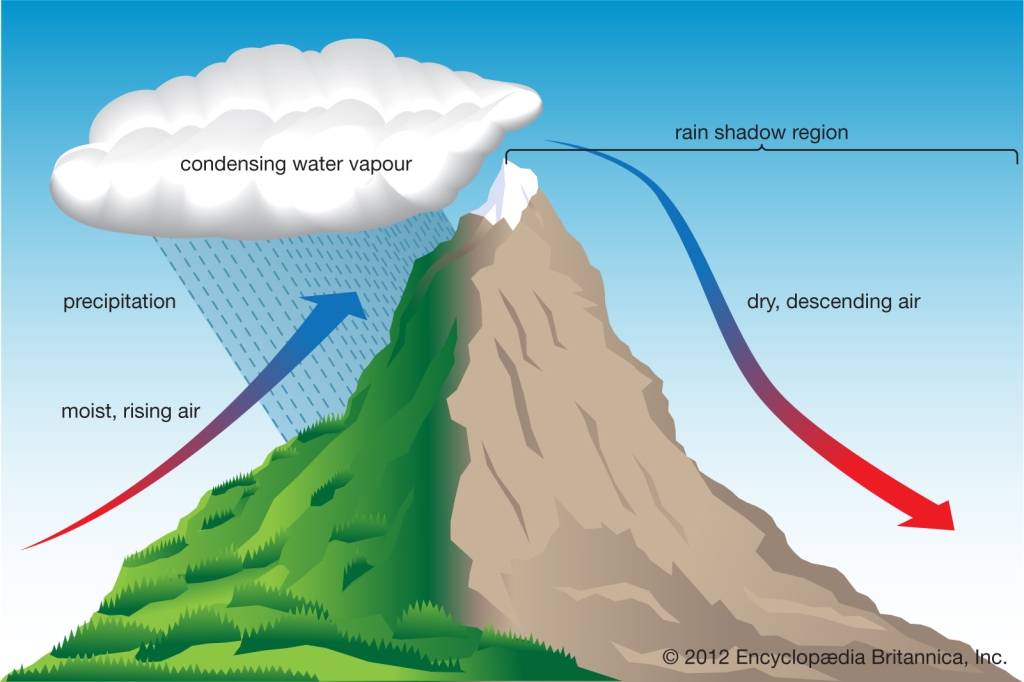
Rain shadow desert
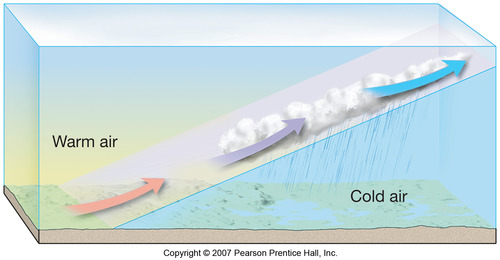
Warmer, & less dense air, is forced over cooler, & denser air
Front: when warm & cold air collide
Air Parcels
Imaginary volume of air
– a few hundred m³
ASSUMPTION
1. no heat is transferred into, or out of it
2. Acts independently of the surrounding air
3. HIGHLY IDEALIZED
We use them to
1. Determines if the air will rise or sink by comparing parcel of air to its surrounding
2. predict if clouds will form
Adiabatic Lapse Rates ALR
WALR & DALR help us to
1. Understand if a parcel will rise or sink
1. Determines if a cloud will form
2. Determines type, & height of clouds

The change in T due to a change in altitude of a non‐condensing parcel

The change in T due to a change in altitude of a condensing parcel
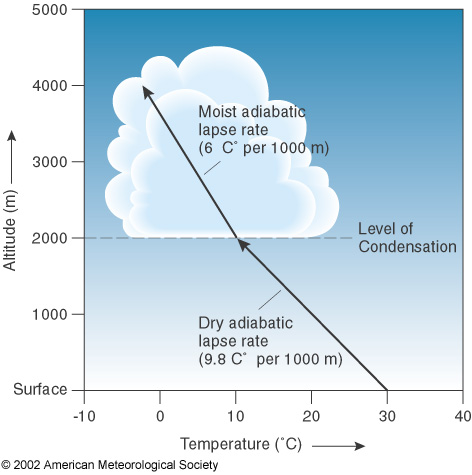
Environmental Lapse Rate (ELR)
Actual measureable T change with height
Atmospheric stability
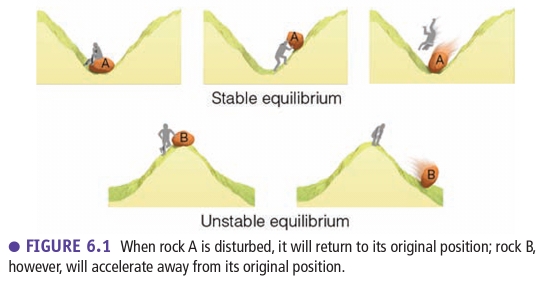
Stable Air (Tair < Tsur.)
If a parcel cooler than the surrounding, it would be more dense, so sink back to it’s original position
Air resists vertical (up & down) motion
Air is in stable equilibrium when it tends to return to its original position
Unstable Air (Tair > Tsur.)
If a parcel warmer than the surrounding, it would be less dense, so rise to an altitude where it’s T equaled that of surrounding
Air that is in unstable equilibrium will move away from its original position
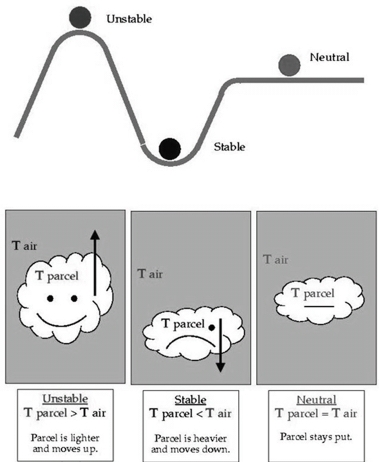

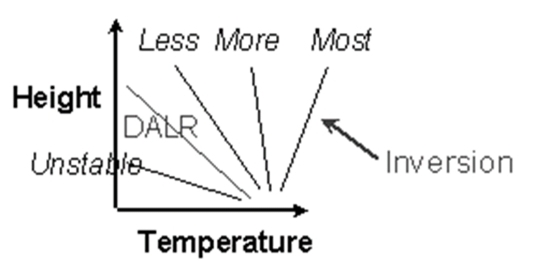
1. Absolute Stability
2. Absolute Instability
3. Conditional Instability Determined by measuring air T at different heights & comparing it to the ELR

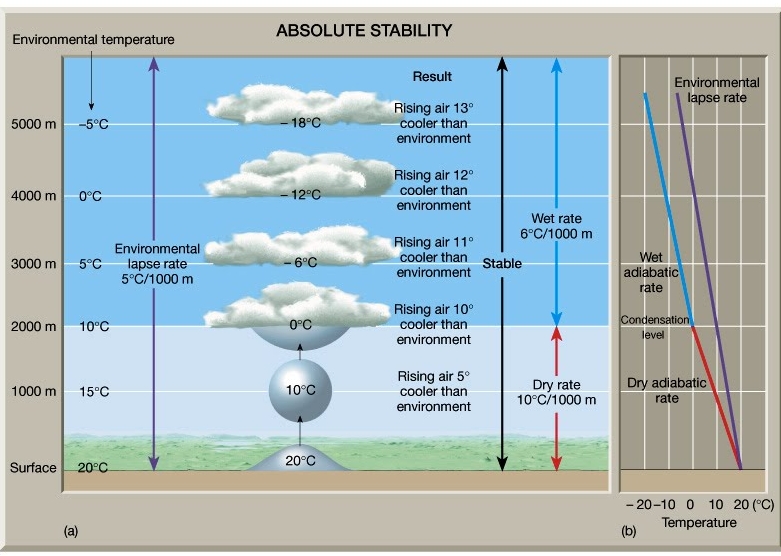
When the ELR < WALR < 6°C/Km
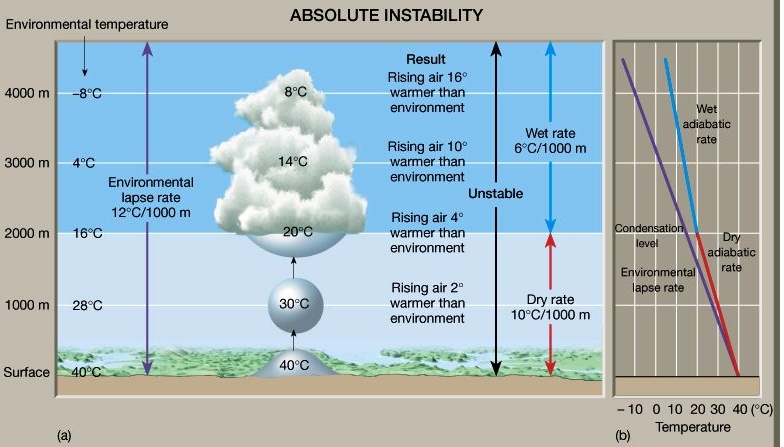
If the ELR > DALR > 10°C/Km

When DALR > ELR > WALR (10 > ELR> 6)
Stability & Daily Weather
If stable air is forced up, the associated clouds have little vertical thickness & precipitation is light
Clouds associated with unstable air are towering & accompanied by heavy rain
Thunderstorms produced by the unstable air that caused by the passing hurricanes
Changes in Stability
Stability is enhanced by the following
1. Radiation cooling of surface after sunset
2. The cooling of an air mass from below
3. General subsidence within an air column (sinking)
Stable atmosphere are cooling from below & warming aloft
Instability is enhanced by the following
1. Solar heating warming the lower atm
2. The heating of an air mass from below
3. Upward movement of air
4. Radiation cooling from cloud tops
Unstable atmosphere are heating from below & colling aloft
Vertical Air Movement
Subsidence downward motion of air
Stabilizes the air if the air above is warmed
Can result in the evaporation of clouds
Summary
ALR
DALR = 10°C/Km, Non-Condensing air
WALR ≈ 6°C/Km, Condensing air
Atm Stability
Stable air : Tp < Ta, sink
Unstable air : Tp > Ta, rises
Neutral : Tp = Ta, stay in its hight
Types of Stability
Absolute Stability:
ELR < WALR, ELR < 6°C/Km
Absolute Instability:
ELR > DALR, ELR > 10°C/Km
Conditional Instability :
DALR > ELR > WALR, 10 >ELR> 6
The End
